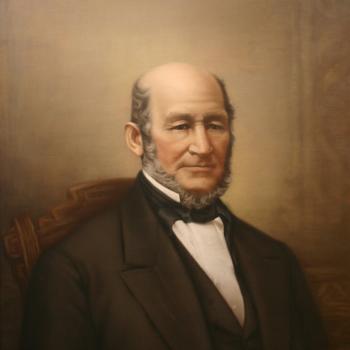By Steven Kellmeyer
 "We need to read Scripture the way God intended it to be read," said one of my friends from amid piles of concordances, grammar books, and Greek and Hebrew dictionaries. "Hey, why are you laughing?"
"We need to read Scripture the way God intended it to be read," said one of my friends from amid piles of concordances, grammar books, and Greek and Hebrew dictionaries. "Hey, why are you laughing?"
He didn't see the incongruity. While the tools he has at his disposal are useful, they weren't at Augustine's elbow, or at Paul's. Scripture does not describe Jesus whipping out a grammar book on the road to Emmaus. We don't need to be ancient language scholars in order to read Scripture as Jesus and the apostles did; we need only a good translation and an ear for the four-fold sense.
Before you read any further, get out your copy of the Catechism of the Catholic Church and read (or, hopefully, re-read) 115-118. The concept of Scripture's two-fold meaning presented here is grounded in a solid understanding of Jesus' dual natures and in how he came to have those dual natures. Because Jesus is the Logos, the Word of God incarnate, and Scripture is the word of God written, there is a correspondence between who Jesus is and what Scripture is. Jesus Christ has two natures, a fully human nature and the fully divine nature. His human nature is a conduit for his divine nature -- that is, everything he did as a man reflects or portrays some aspect of the invisible God.
Scripture works in a similar way. The Catechism speaks of two senses in Scripture: the literal sense and the spiritual sense. The spiritual sense, in turn, is made up of three kinds: the allegorical (or "typological" sense), the moral (or "tropological" sense), and the anagogical (or "heavenly") sense. Thus Scripture, the book that tells us about Jesus, also has two "natures": a literal meaning and a spiritual meaning. We might summarize things this way:
The literal sense of Scripture is the meaning conveyed by the words, discovered through sound interpretation. All other senses of Scripture are based on the literal. This literal sense accurately describes what took place. It also points us to deeper spiritual meanings.
The allegorical sense, especially of the Old Testament, signifies a foreshadowing or "type" that will be fulfilled by Christ in the New Testament. That is, the Old Testament event points us to something Jesus did or made clear in the New Testament.
The moral sense of the Old Testament is recorded for our instruction. It moves the Christian to act justly in the life of the Church by indicating to us what ought to be done.
The heavenly sense of the Old Testament leads us toward heaven and our fulfillment in heaven in the way that it tells us about the coming of Jesus.
These senses apply most clearly in the Old Testament but may be used in the New Testament as well. How does this work in practice? We begin by observing certain similarities between Old Testament and New Testament passages.
In Genesis 1:1-2 and Matthew 3:16 the Spirit of God descends on water -- the seas of the formless earth in the first case and the waters of the Jordan River at Christ's baptism in the second. At first glance, that is the only correspondence between the two passages. However, further reading and reflection reveal that these are the only two places in Scripture that describe the Spirit of God moving over water. Because the Old Testament points to the New, and we have found a unique correspondence between these two passages, it seems reasonable to conclude that the Genesis passage is meant to help us interpret the passage in Matthew.
We can see the correspondences in each sense of Scripture. The literal sense: Each passage describes something that actually occurred -- the Spirit of God moved over the waters. The allegorical sense: The description of the original creation of the world foreshadows the new creation we become through the sacrament of baptism. The moral sense: Just as creation was "baptized" into existence, so we must be baptized in order to become a new creation in Jesus Christ. The heavenly sense: In this baptismal (re)generation, God adopts us as his child, a beloved son or daughter in whom he is well-pleased, and brings us into union with him. Thus the story of creation in Genesis tells us that, from the very beginning, even before God formed man, God always intended created man to be in unity with him, and that he accomplishes this unity through baptism.
If this is a valid way to read Scripture, we should find evidence for such readings within Scripture itself, and so we do.
Look at 1 Kings 18:20-40. Elijah forces the people of Israel to choose either Baal or Yahweh as their god by proposing a test: The prophets of Baal should each slay a bull and set it on dry wood, and Elijah would do the same. They should call on the name of Baal and Elijah on the name of God, and "who answers by fire, he is God" (1 Kings 18:24). Baal's prophets prayed to him all morning to no avail, though they cried aloud and slashed themselves with swords. Then Elijah repaired the altar of the Lord that had been thrown down by replacing the twelve stones on which it was built (one for each tribe of Israel). After he had people fill four jars with water, douse the slain bull and the wood three times, Elijah called in the name of the Lord. "Then the fire of the Lord fell and consumed the burnt offering, and the wood, and the stones, and the dust" (1 Kings 18:38). The people believed and Elijah had the prophets of Baal seized and killed.




